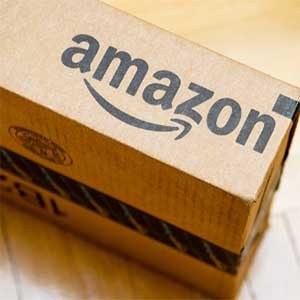
This week, 21C Jewelry Solutions announced that Kristin Cherry Jackson had joined the consultancy.
Cherry Jackson used to work for Amazon.com as a senior category merchant manager for jewelry. To understand her job, you have to realize that Amazon sells in two ways. The first is through standard Amazon retail, where you order direct from the company. The second is through third-party sellers. Cherry Jackson worked with third-party jewelry sellers, which included everyone from big chains to manufacturers to mom-and-pop jewelry stores.
Though it’s often been unclear how committed Amazon is to the jewelry category, she assured me that, “in Amazon’s opinion, everything is a growth area. It’s all about being a one-stop shop, and if it doesn’t have something, it failed.”
Here are her insights into how the e-colossus works with its third-party jewelry sellers.
Prime is, well, prime. Amazon Prime is the key to a lot. Prime shipping is really attractive to people, and customers have gotten spoiled. What happened over the last three years is we are seeing a lot more sellers discovering the power and popularity of Prime.
The whole reason for Amazon’s success is they knock logistics out of the park. They know how to deliver quickly and efficiently. They have teams of PhDs and economists whose sole job is to work out algorithms for fulfillment centers.
When Prime really took off, more and more sellers started adding inventory to “Fulfilled by Amazon.” But Amazon retail can only handle a certain amount of inventory. So about two years ago, Amazon introduced Seller Fulfilled Prime.
As long as sellers could prove that they could fulfill the Prime requirements by shipping themselves, it created a whole new opportunity scenario. And with jewelry, the price of the items is high enough that they could do shipping themselves [without worrying about costs].
With Prime, it’s not really just the [free shipping], it’s the speed. I’ve had sellers tell me that with other online channels, their peak selling time is seven days before Valentine’s Day. With Amazon, it’s three or even two days before. Because people expect that quick delivery.
Packing counts. Amazon Retail uses beautiful packing for jewelry. Sellers don’t often, though. I have seen so many items in poly bags. That is poor presentation, and the onus for that is on the seller. Sellers can set themselves apart by taking control of their detail pages and their packaging and writing professional listings. Those things really make a difference in selling items.
Quality assurance matters even more. Amazon has a really high trust level. Trust, as we know, is crucial for the fine jewelry business.
Sellers need to understand that their quality could be under scrutiny at any time. Even before a seller is able to sell fine jewelry, they have to send samples to Amazon, which are sent to a gem lab. Many times, the sellers aren’t aware of the quality of their product. There is a significant failure rate.
If for some reason there is a discrepancy [between the item and its description], that puts sellers at risk, particularly if Amazon finds egregious discrepancies. We see that happen a lot. It’s not uncommon for sellers to be suspended. I’ve seen big sellers suspended, because Amazon doesn’t play favorites.
And if that happens, they have to reapply, and that includes a $5,000 fee for a big seller. Though for a lot of sellers, the fee is not the pain point. The painful part is not being able to sell on Amazon for a few weeks.
(Image courtesy of Amazon.com)
- Subscribe to the JCK News Daily
- Subscribe to the JCK Special Report
- Follow JCK on Instagram: @jckmagazine
- Follow JCK on X: @jckmagazine
- Follow JCK on Facebook: @jckmagazine